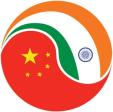
Gostaria de chamar a atenção para o lançamento da edição anual do relatório global sobre o desenvolvimento sustentável sobre o estado do mundo em 2006, desta vez trazendo como destaque o estado de meio mundo, isto é, da China e da India.
Não se deve levar estritamente ao pé da letra toda a literatura produzida por ONGs, especialmente as ecologistas, e talvez em especial as americanas, mas pode-se igualmente reconhecer que muita gente séria trabalha para elas, e esta em particular, o Worldwatch Institute tem demonstrado credibilidade em seu trabalho analítico, que serve ao mesmo tempo como alerta para certas tendências preocupantes. o WI também tem um certo viés pró-desenvolvimento e pró-Terceiro Mundo, o que nem sempre é garantia de isenção científica, mas neste caso vale a pena investir.
State of the World 2006
Special Focus: China and India
January 2006, ISBN: 0-393-32771-X, 244 pages
This year, Worldwatch Institute's annual State of the World report provides a special focus on China and India, examining the global impact as these two nations join the United States and Europe as major consumers of resources and polluters of local and global ecosystems. The report explains the critical need for both countries to "leapfrog" the technologies, policies, and even the cultures that now prevail in many western countries for the sake of global sustainability—and reports on some of the strategies that China and India are starting to implement.
From the Foreword:
"The western model of growth that India and China wish to emulate is intrinsically toxic. It uses huge resources—energy and materials—and generates enormous waste. The industrialized world has mitigated the adverse impacts of wealth generation by investing huge amounts of money. But... it remains many steps behind the problems it creates. India and China have no choice but to reinvent the development trajectory."
Sunita Narain
Director, Centre for Science and Environment, New Delhi, India
Besides the focus on China and India, State of the World 2006 looks at actions corporations can take to be more socially responsible; examines the potential socioeconomic, health, and environmental implications of nanoscale technologies; assesses the impacts of large-scale development of biofuels on agriculture and the environment; describes mercury sources, industrial uses, and health hazards worldwide; and provides an overview of the need to safeguard freshwater ecosystems, with examples of proven approaches in cities, villages, and farming regions around the world.
View the complete Table of Contents and links to chapter summaries, or click on one of the images from State of the World 2006 below for sample content.
State of the World 2006
Table of Contents
Foreword
Xie Zhenhua
Foreword
Sunita Narain
Preface
Christopher Flavin
State of the World: A Year in Review
Lori Brown
Chapter 1: China, India, and the New World Order
Christopher Flavin and Gary Gardner
Chapter 2: Rethinking the Global Meat Industry
Danielle Nierenberg
Chapter 3: Safeguarding Freshwater Ecosystems
Sandra Postel
Chapter 4: Cultivating Renewable Alternatives to Oil
Suzanne C. Hunt and Janet L. Sawin with Peter Stair
Chapter 5: Shrinking Science: An Introduction to Nanotechnology
Hope Shand and Kathy Jo Wetter
Chapter 6: Curtailing Mercury's Global Reach
Linda Greer, Michael Bender, Peter Maxson, and David Lennett
Chapter 7: Turning Disasters into Peacemaking Opportunities
Michael Renner and Zoë Chafe
Chapter 8: Reconciling Trade and Sustainable Development
Aaron Cosbey
Chapter 9: Building a Green Civil Society in China
Jennifer L. Turner and Lü Zhi
Chapter 10: Transforming Corporations
Erik Assadourian
Notes
Index
ola até 2005 este relatório - estado do mundo - estava disponivel para download no site da UMA. Vc sabe onde podemos fazer download desta publicacao?
ResponderExcluirobrigada
dulce